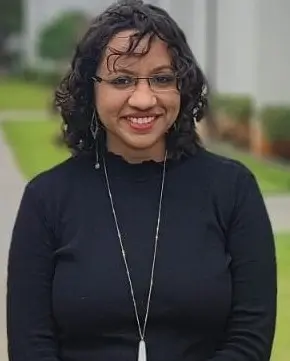Chicago Style Footnote Format: Footnote Citations and Examples

Footnotes are often used to indicate citations in a research paper, directing the reader’s attention to the referenced work. The Chicago Manual of Style (CMOS), commonly implemented for research papers in Humanities and Social Science fields, provides detailed guidelines on how footnotes and endnotes should be formatted in academic papers. Here’s a succinct guide for you.
Why are footnotes used in Chicago style guide?
Chicago footnote format and examples
Chicago footnote citation with multiple authors
Why are Footnotes Used in Chicago Style Guide?
Specialists in media studies, literature, and art history often have to write lengthy papers. The Chicago style is also preferred in the case of book publication. Such lengthy content is expected to include a lot of citations and references. Therefore, listing the references only at the end of the paper or book will be inconvenient for the readers.
This is where footnotes come in handy. They help your readers access the referenced work immediately without having to navigate a lengthy list of references.
Footnotes vs. Endnotes
Chicago style offers the use of footnotes and endnotes to cite references. If footnotes are convenient, why are endnotes used? Take a look.
Footnotes allow you to include citations without breaking the flow of information in the main text. Although they are preferred for lengthy writing pieces, footnotes occupy a large space of the page when used extensively. This is where endnotes come into picture.
Unlike footnotes, endnotes are placed on a separate page at the end of your main text under the heading “Notes” at the center of the page. However, finding the corresponding endnote may be much more difficult for your readers than finding a footnote.
Generally, the choice of citation format depends on the guidelines of your instructor, institution, or target journal.
Chicago Footnote Format and Examples
Footnotes in Chicago style can be of two types: full notes and short notes.
As the name indicates, “full notes” provide the complete publication details of the referenced work. This is generally mentioned when it is cited for the first time.
Example: James McCormick, Hydrogen Peroxide Rocket Manual. FMC Corporation, 1965.
On the other hand, “short notes” summarize the details by mentioning only the author’s last name, shortened title of the work (if longer than four words), and page number (if applicable). Typically, short notes are used for subsequent citations of the work being cited multiple times in your paper.
Example: McCormick, “Hydrogen Peroxide Rocket Manual
Pro Tip: In Chicago style, you can use “ibid” to indicate the footnote that is immediately preceding. An abbreviation of the Latin “ibidem,” it means “in the same place.” Using “ibid” in your footnote directs the readers to the citation that immediately precedes it, saving you space and time in the process
Placement of Footnotes
Footnotes are placed at the bottom of the page. The corresponding reference numbers, mentioned consecutively starting from 1, are written as superscripts in the text. These superscripts are placed after the punctuation, except in the case of a dash
The authors verified the results.1
The authors verified the results1—yet there were discrepancies in the reported findings
Pro Tip: Never include multiple footnotes at the same point in a sentence (e.g., text1, 2, 3). If multiple works need to be combined, you can use semi-colons to separate them in a single footnote (e.g., McCormick, “Hydrogen Peroxide Rocket Manual”; Constantine and Cain, “Hydrogen Peroxide Handbook”).
Chicago Footnote Citations with Multiple Authors
Citing works with multiple authors requires you to mention all author names when there are up to three authors. Use “et al.” after the first author’s name in case of four or more authors.
| Full Note | Short Note | |
| One author | James McCormick | McCormick |
| Two authors | Oliver Bey and Gerhart Eigenberger | Bey and Eigenberger |
| Three authors | George Scatchard, George M. Kavanagh, and Leland B. Ticknor | Scatchard, Kavanagh, and Ticknor |
| Four or more authors | Angelo Pasini et al. | Pasini et al. |
Conclusion
The guidelines for using footnotes (short notes vs. full notes) vary across fields and institutions. You might have to use a full note for all citations or use only short notes, provided the sources are listed in the Bibliography. Always check the journal’s guidelines or discuss with your instructor before deciding on the citation format.
Give more time for your research, spend less time formatting! Check out Editage’s Manuscript Formatting Services and get professional support for journal formatting.








